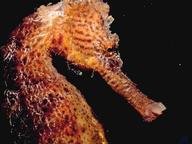Quiz Answer Key and Fun Facts
1. There are about 50 species of seahorses currently recognised. In which region are the greatest number of species found?
2. Seahorses belong to the Syngnathidae family of fish which also include:
3. What do you call baby seahorses?
4. What is the interesting feature of a male seahorse?
5. How do seahorses regulate their buoyancy in the water?
6. The pectoral fins of a seahorse are located...
7. When keeping seahorses in a home aquarium...
8. What is an ovipositor?
9. What do you call the bony growth on the top of a seahorse's head?
10. Approximately how many tonnes of dried seahorses are consumed annually for the traditional Chinese medicine market?
Source: Author
IndigoFire
This quiz was reviewed by FunTrivia editor
crisw before going online.
Any errors found in FunTrivia content are routinely corrected through our feedback system.
